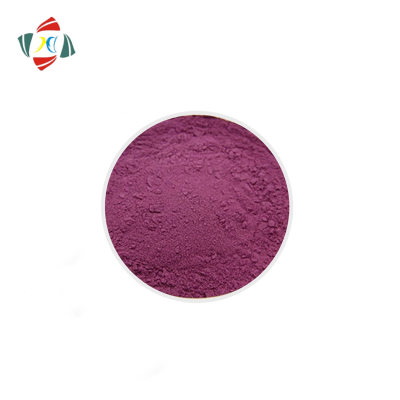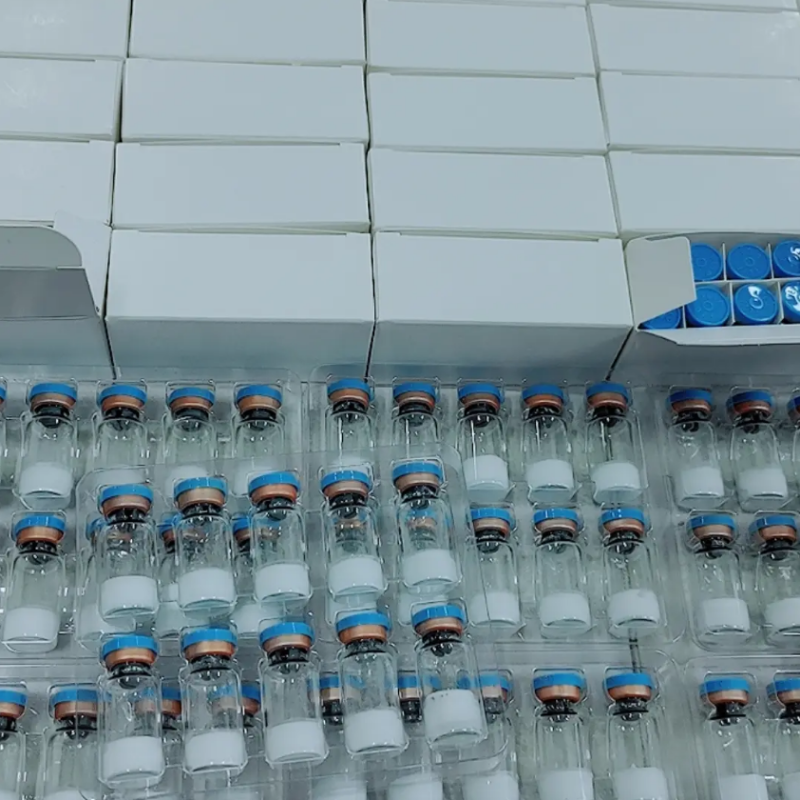Freshly baked! The 2020 ACR Gout Management Guide was officially announced, and non-bubs was downgraded to second-line medication! Guide sharing.
-
Last Update: 2020-07-21
-
Source: Internet
-
Author: User
Search more information of high quality chemicals, good prices and reliable suppliers, visit
www.echemi.com
Yimaitong compiles and arranges. Unauthorized media reprint is prohibited. Individuals are welcome to forward to the circle of friends.Introduction: on May 11, the American Society of Rheumatology guidelines for gout management (2020 Edition) was published online in the journals of arthritis rheumatol and arthritis care res.it has been nine years since the publication of the 2012 version of ACR guidelines (October 2012). As previously reported in the column of "medical pulse" medicine, an important update of the 2020 version of ACR guidelines is that only allopurinol is retained as the first-line antiuricemia drug selection, and febuxostat is "kicked" out of the front-line team.in addition, there are many content updates. The editor has compiled and arranged them for your reference (if you need the original English version, please leave your contact information in the message box).2020acr guidelines include the following 9 parts: 1. Indications for initial uric acid lowering therapy (ult); 2. Suggestions for initial ult in patients with gout; 3. Starting time of ult; 4. Duration of ult; 5. Suggestions on specific drug use; 6. When to consider changing the ult strategy; 7. Management of acute gout; 8. Lifestyle management; 9. The recommended intensity of CO medication management is divided into "strongly recommended" and "conditional recommendation": Highly recommended: supported by medium and high-level evidence, the benefits outweigh the risks.➤ conditional recommendation: the benefits and risks may be more balanced, and / or the evidence level is low or there is no relevant data.the recommendations in this guideline are applicable to patients with gout, with the exception of a uric acid lowering treatment recommendation for asymptomatic hyperuricemia patients [defined as serum uric acid ≥ 6.8 mg / dl (405umol / L), no history of rheumatism or gout stones].1 indications for initiating ult ➤ it is strongly recommended to initiate uric acid lowering therapy for gout patients with any of the following characteristics: (1) one or more subcutaneous gout stones.(level of evidence: high) (2) there is evidence of any form of radiological damage caused by gout.(evidence level: medium) (3) gout attacks frequently (> 2 times / year).(level of evidence: high) ➤ for patients who have experienced more than one acute gout attack but are not frequent (< 2 times / year), it is conditional to recommend the initiation of ult treatment.(level of evidence: medium) ➤ for patients with gout for the first time, it is recommended not to start ult treatment.however, it is recommended to start ult for patients with moderate to severe chronic kidney disease (CKD & gt; 3), serum uric acid (Su) & gt; 9mg / dl (535.5umol / L) or urolithiasis.(evidence level: medium) ➤ for patients with asymptomatic hyperuricemia, it is recommended not to initiate ult if possible.(level of evidence: high) 2 recommendations for initial ult in gout patients: allopurinol is highly recommended as the first-line drug of ult, including in patients with moderate and severe CKD (CKD & gt; 3).(evidence level: medium) ➤ in patients with moderate and severe CKD (CKD > 3), allopurinol and febuxostat had higher priority than probenecid.(level of evidence: medium) ➤ it is strongly not recommended to use peglotase as a first-line option. (level of evidence: medium) ➤ it is suggested to start with low dose and then titrate gradually: allopurinol initial dose < 100mg / D (for CKD > 3 stage patients, the dose should be lower); the initial dose of febuxostat < 40mg / D; the starting dose of probenecid is 500mg, QD or bid (the low dose starting of probenecid is recommended conditionally). (level of evidence: medium) ➤ at the same time, anti-inflammatory preventive treatment was performed, and drugs such as colchicine, NSAIDs, prednisone / prednisolone were selected. (level of evidence: medium) ➤ continuous concurrent anti-inflammatory treatment for 3-6 months, not & lt; 3 months; if the patient continues to have gout attacks, continuous evaluation and anti-inflammatory preventive treatment are required. Br / > during the onset of gout, but not at the onset of gout. ➤ for patients who are receiving ult, it is strongly recommended that: (1) for all patients receiving ult treatment, it is strongly recommended to adopt a target treatment strategy, that is, titrating the dosage of ult based on the continuously measured Su level to achieve the Su target, rather than the ult strategy of fixed dose. (level of evidence: medium) (2) for all patients receiving ult treatment, it is strongly recommended that the Su target be < 6mg / dl (360umol / L) and maintained. (evidence level: high) (3) for all patients receiving ult treatment, it is conditional to recommend the enhanced scheme of ult dose management provided by non doctor providers to optimize the strategy, including patient education, shared decision-making and standard treatment plan. (evidence level: medium) compared with the stop of ult, it is conditionally recommended to treat the ult indefinitely. (evidence level: very low) 5ult specific drug use recommendations allopurinol: ➤ it is recommended that Southeast Asian (such as Chinese Han, Korean, Thai, etc.) populations and African American patients be tested for HLA-B * 5801 gene before starting allopurinol treatment. (level of evidence: very low) ➤ patients of other races or nationalities should not be tested for HLA-B * 5801 gene before allopurinol treatment. (level of evidence: very low) ➤ it is strongly recommended that allopurinol start at a dose of < 100mg / D (lower in CKD patients) rather than a high dose. ➤ conditional recommendation, allopurinol desensitization is recommended for patients with allergic reaction to allopurinol but can not be treated with other oral liquids. (level of evidence: very low) febuxostat: ➤ conditional recommendation: for patients with a history of CVD or new CVD events who are using febuxostat, if feasible, switch to other ult drugs. (level of evidence: medium) uric acid excretors: ➤ for patients who are considering or are using uric acid excretors, it is conditionally recommended not to conduct urine acid test. (level of evidence: very low) ➤ it is recommended that patients receiving uric acid excretion therapy should not be treated with alkalized urine. (evidence level: very low) 6 when to consider changing the ult policy? ➤ if the patient is treated with a xanthine oxidase inhibitor (xoi), Su is still > 6mg / dl (360umol / L) and gout is still frequent (> 2 times / year) or the subcutaneous gout is not dissolved despite taking the maximum tolerated dose or the maximum xoi dose approved by FDA. if possible, it is recommended to replace it with another xoi instead of the combined uric acid excretory drug. (level of evidence: very low) ➤ for patients with frequent gout episodes (> 2 times / year) or subcutaneous gout dissolution, conversion to pegololase therapy rather than maintenance of the current ult regimen is highly recommended for patients who do not achieve Su compliance with xoi, uric acid excretion drugs, and other interventions, and have frequent gout episodes (> 2 times / year) or subcutaneous dissolution of gout stones. (level of evidence: medium) ➤ for those who can not achieve Su standard after xoi, uric acid excretion drugs and other intervention measures, but gout attack is not frequent (< 2 times / year) and there is no subcutaneous gout stone. It is strongly recommended to continue the current ult treatment scheme instead of converting to peglotase treatment. (evidence level: medium) 7 acute gout management ➤ gout acute attack period, colchicine, NSAIDs or glucocorticoids (oral, intra-articular or intramuscular injection) are strongly recommended as the first choice of drugs. (level of evidence: high) ➤ when choosing colchicine, it is strongly recommended to choose low-dose colchicine instead of high-dose colchicine, because the efficacy of low-dose colchicine is similar to that of high-dose colchicine, and the risk of adverse reactions is low. (evidence level: high) ➤ during the acute attack of gout, local ice compress is recommended as an adjuvant treatment. (evidence level: low) ➤ if patients cannot use the above drugs due to intolerance or contraindications, it is recommended to use IL-1 inhibitors conditionally. (level of evidence: medium) ➤ glucocorticoids (intramuscular, intravenous or intra-articular) are strongly recommended for patients who cannot receive oral dosage forms, rather than IL-1 inhibitors or adrenocorticotropic hormone (ACTH). (evidence level: high) 8 lifestyle management for gout patients, regardless of disease status, conditional recommendation: ➤ limit alcohol intake. (level of evidence: low) ➤ limit purine intake. (level of evidence: low) ➤ limit high fructose corn syrup intake. (level of evidence: very low) ➤ weight loss is recommended for overweight / obese patients. (level of evidence: very low) ➤ vitamin C supplements are not recommended. (evidence level: low) 9 for gout patients, regardless of disease status, conditional recommendation: ➤ if feasible, replace hydrochlorothiazide with other antihypertensive drugs. (level of evidence: very low) ➤ if feasible, losartan is preferred as a antihypertensive drug. (evidence level: very low) for gout patients, regardless of disease status, it is not recommended to stop low-dose aspirin (when the patient needs aspirin treatment due to relevant indications). (level of evidence: very low) ➤ addition or conversion of fenofibrate to other cholesterol lowering drugs (such as statins, cholic acid chelators, nicotinic acid drugs, etc.). (evidence level: very low) yimaitong compiled from: Fitzgerald JD, dalbeth n, mikuls T, et al. 2020 American College of rhaumatology guide for the management of out [J]. Artistis care res (Hoboken). 2020.doi: 10.1002/acr.24180! "Expert consensus on multidisciplinary diagnosis and management of diabetic nephropathy" 2. Why does hypoglycemia occur repeatedly after drug withdrawal? 3. What dose and predictive factors are needed for basal insulin to achieve blood glucose target in Chinese patients?
This article is an English version of an article which is originally in the Chinese language on echemi.com and is provided for information purposes only.
This website makes no representation or warranty of any kind, either expressed or implied, as to the accuracy, completeness ownership or reliability of
the article or any translations thereof. If you have any concerns or complaints relating to the article, please send an email, providing a detailed
description of the concern or complaint, to
service@echemi.com. A staff member will contact you within 5 working days. Once verified, infringing content
will be removed immediately.







